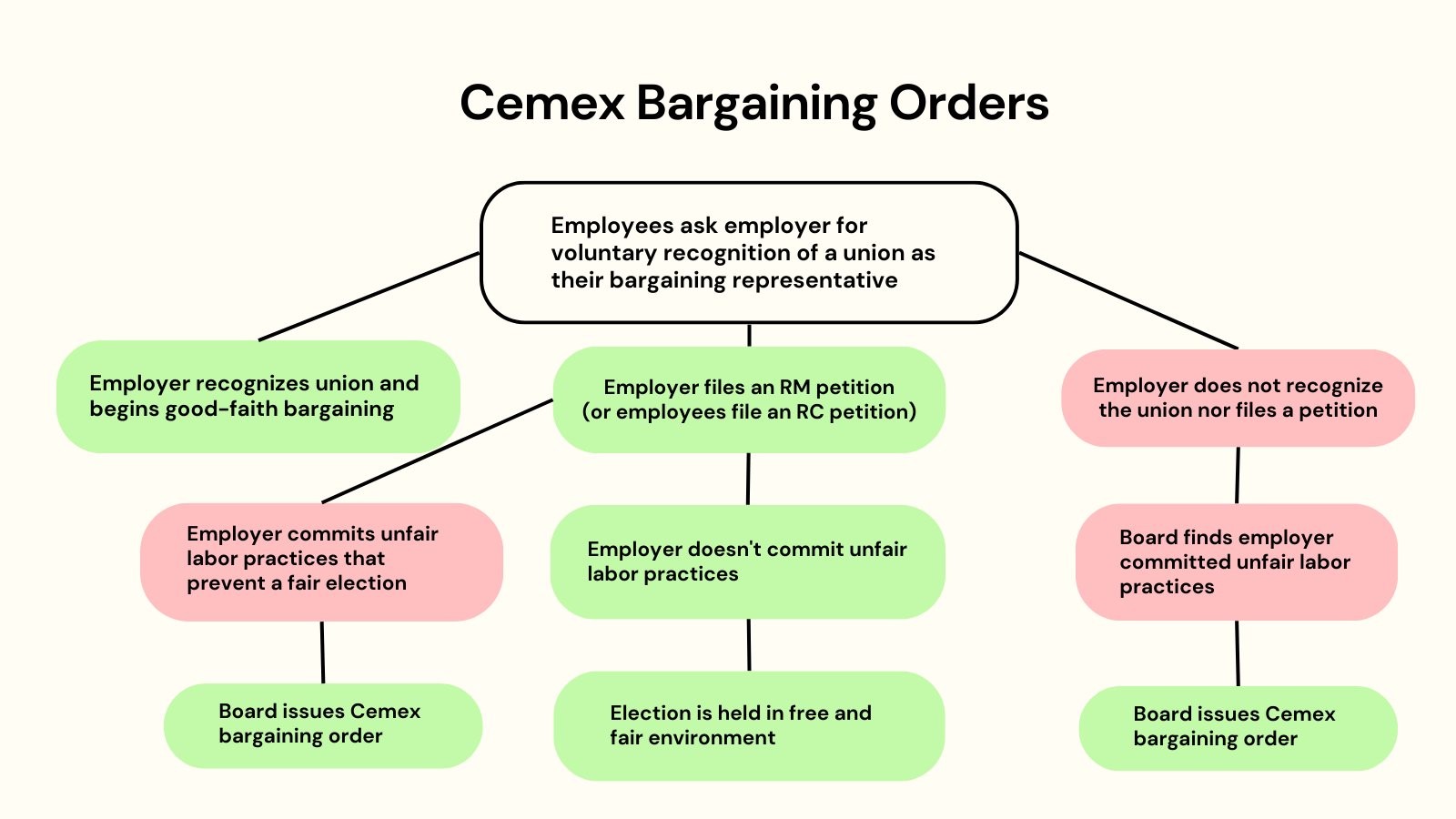NLRB Creates New Standard for Recognizing Unions
Author: Robert S. Teachout, Brightmine Legal Editor
August 28, 2023
The National Labor Relations Board (NLRB) has made sweeping changes to the process for recognizing union representation when a union presents a private-sector employer with union authorization cards signed by the majority of its employees.
The ruling in Cemex Construction Materials Pacific upends the process for requesting union elections in place for more than 50 years and is expected to make it easier for unions to win recognition as employees’ bargaining representatives.
These changes radically shift the legal landscape for companies addressing demands for recognition and organizing campaigns.
Former NLRB Chairmen John Ring and Philip Miscimarra, Morgan Lewis
Under the new framework, when a union requests than an employer give it voluntary recognition as the bargaining representative of its employees on the basis that a majority of employees in an appropriate bargaining unit have designated the union as their representative, the employer must:
- Recognize the union and begin good-faith bargaining; or
- Promptly petition for an election conducted by the NLRB.
However, if an employer commits any unfair labor act during the election process, the NLRB will dismiss the election petition and order the employer to recognize and bargain with the union. The Board will no longer order a re-election.
The NLRB provided a flowchart showing how union recognition requests will work under the new standard:

“The Cemex decision reaffirms that elections are not the only appropriate path for seeking union representation, while also ensuring that, when elections take place, they occur in a fair election environment,” stated NLRB Chairman Lauren McFerran. “Under Cemex, an employer is free to use the Board’s election procedure but is never free to abuse it - it's as simple as that.”
The ruling did not go so far as to reinstate the Joy Silk Mill standard, as General Counsel Jennifer Abruzzo requested. Under Joy Silk, an employer was required to recognize a union when presented with evidence of majority support by employees unless the employer had “good-faith doubt” of the union’s majority support and then requested a NLRB-conducted election. Joy Silk was the standard for union recognition from 1949 until 1971, when it was replaced by the Linden Lumber standard allowing an employer to reject evidence of a majority support for a union and insist on an election. Abruzzo also sought to have the rule allowing “captive audience” meetings overturned, but the Board declined since she did not present arguments on that issue.
In an article about the Cemex ruling, former NLRB Chairmen John Ring and Philip Miscimarra (now partners at Morgan Lewis) decried the decision and warned of its negative consequences.
“These changes radically shift the legal landscape for companies addressing demands for recognition and organizing campaigns,” they wrote, noting that the Board has “shifted the burden of filing representation petitions from unions to employers with the requirement that employers do so “promptly” or face a bargaining order.”
The NLRB also released a final rule on union elections that greatly reduces the time between the filing of an election petition and conducting the election, essentially restoring the timeframe for conducting elections established under the 2014 “ambush election” rules. The new election rule will take effect on December 26, 2023. As a result, employers faced with a union demand for recognition not only have a two-week period to request an election, but a much shorter amount of time to prepare for it.